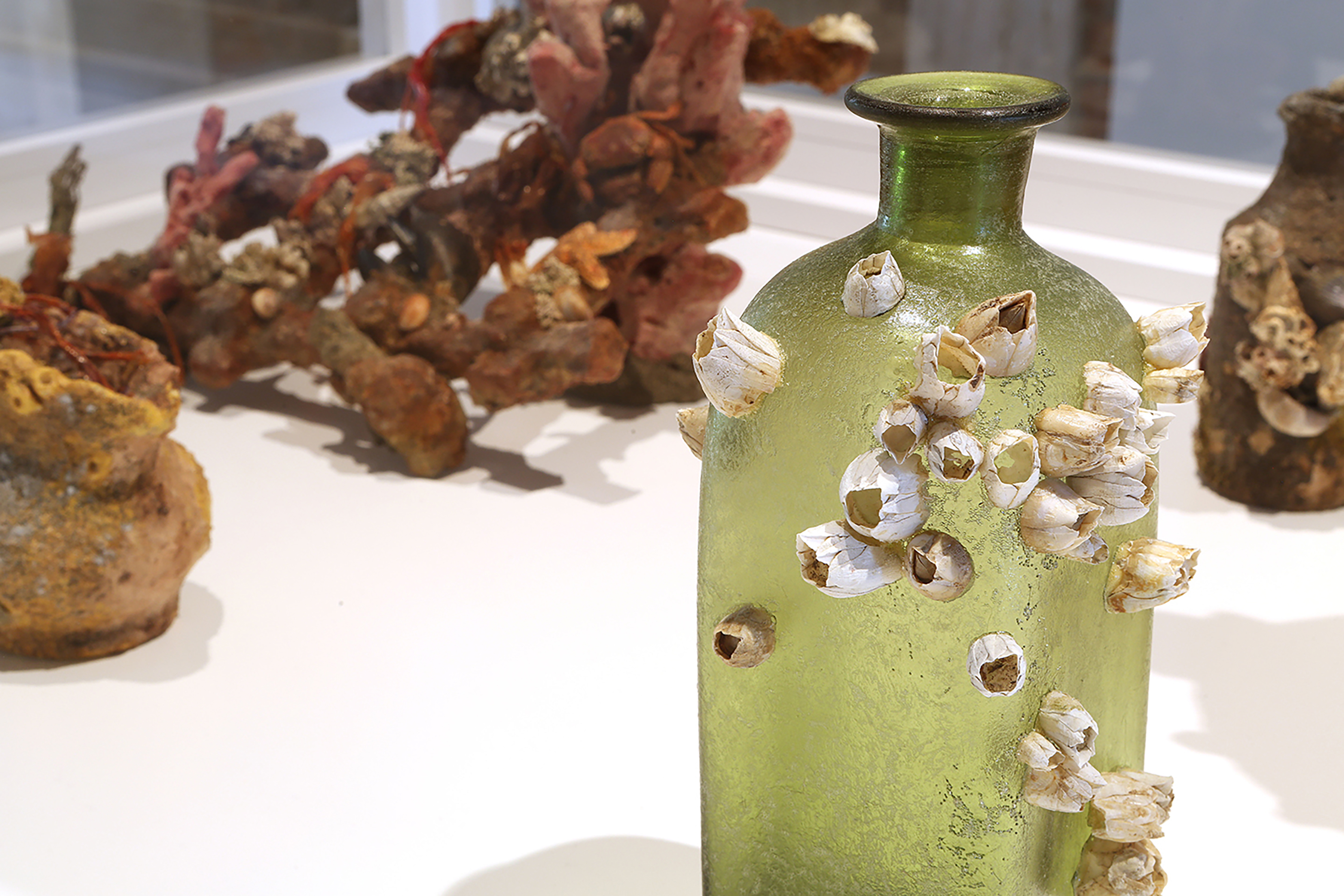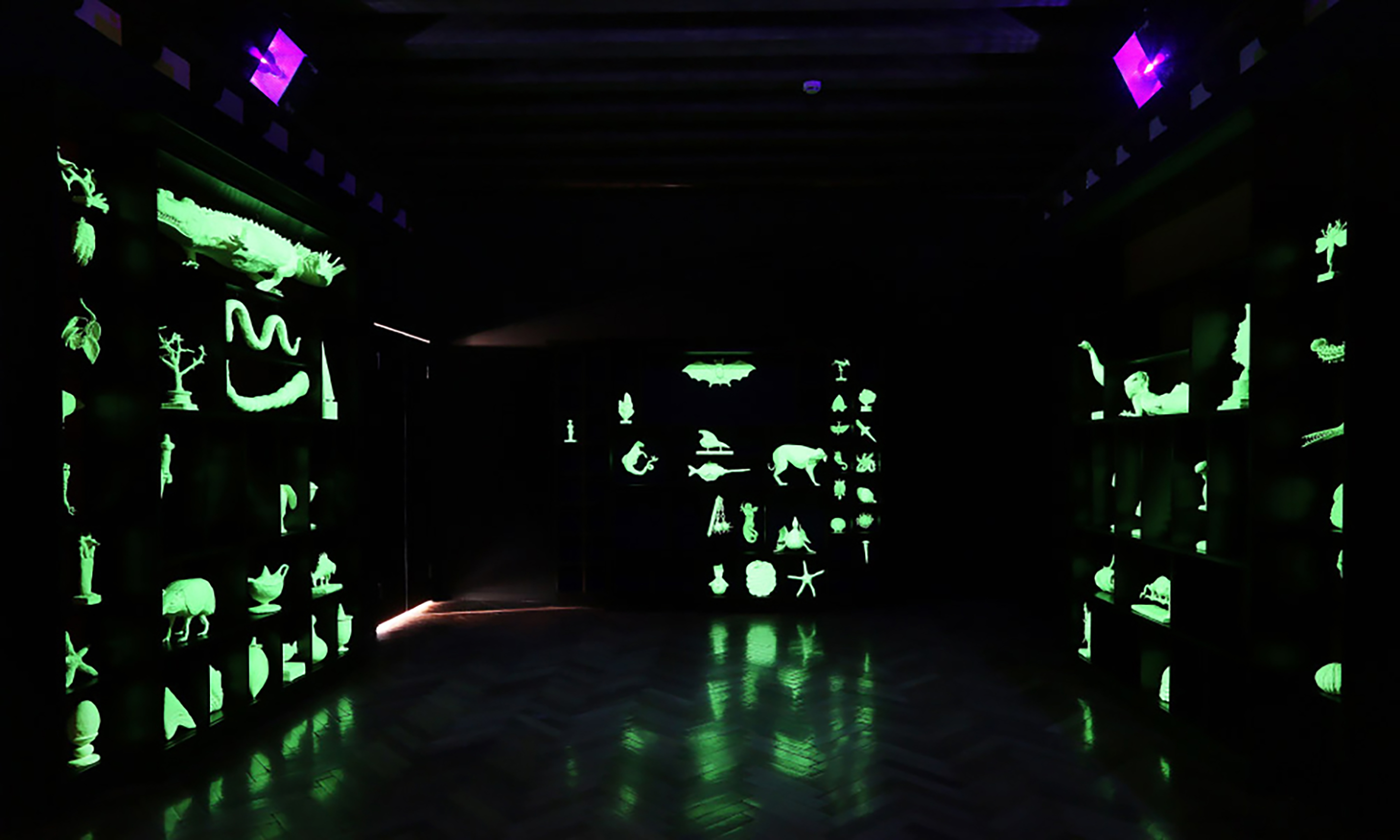Mark Dion, Arseny Zhilyaev. Future Histories
Taking the traditional museum practice of collections and taxonomic displays as a starting point, the two artists create a wunderkammer in the making and an imaginary future museum.

United by a flair for speculation and talent for combining the critical with the playful, Dion and Zhilyaev transform the historic Casa dei Tre Oci into a dynamic and immersive environment. Both artists create a new large-scale installation, each occupying a floor, as well as presenting a selection of existing works in other spaces.
Mark Dion’s new installation The Wonder Workshop is a meditation on the origins of collecting, exploring the pre-Enlightenment Wunderkammer tradition. The work proceeds from a speculative chain or relations which begins with a living bird in far off South America which is killed and skinned by a traveler, brought back to Europe and sold to a curiosity dealer. It is then mounted by a taxidermist and sold to a collector, who installs the bird in his cosmological curiosity cabinet. There it is drawn by an artist, and the image is then reproduced by an engraver and bound in a rare volume. The chain of events that make up the story of this particular bird could end here but, 400 years later, Dion picks it up and fashions a new link that highlights the fetishisation of the exotic and interrogates our fascination with the act of collecting and the culture of nature. With a team of talented sculptors who set up a live workshop on the second floor of the exhibition space in Venice, he produces three-dimensional objects based on the curious imagery from 16th and 17th century Wunderkammen catalog engravings of exotic animals plants, instruments, and ethnographic and archeological artifacts. These will then be exhibited in a new marvelous wonder room exhibition.
In addition to this new installation, Dion also shows works from The Pursuit of Sir William Hamilton. Commissioned by the Fondazione Morra Greco in Naples, the project is an investigation into the legacy and influence of the great polymath and collector Sir Hamilton, the British Envoy Extraordinare to the Kingdom of the Two Sicilies from 1764 to 1798 and a scholar, art patron, archaeologist and volcanologist. Also on display is Dion’s Raiding Neptune’s Vault: A Voyage to the Bottom of the Canals and Lagoon of Venice (1997-1998), the result of an archaeological dig where he dredged a Venetian canal and displayed the finds, originally commissioned by the Nordic Pavilion for the 1997 Venice Biennale.

In his new project Cradle of Humankind, Arseny Zhilyaev depicts an unsettling image of a far off future in which humans have naturally abandoned Earth, turning it into a museum reservation called The Cradle of Humankind, dedicated to the origins of life and civilization. The reservation is part of a network of local museums commemorating historic figures and key events in the history of civilization on Earth, presenting artifacts from the past and merging the utopian aesthetics of the Soviet space programme with the ultimate idealism of Russian Cosmism. It is within the framework of this utopia and Idealism that the museum also offers unique services, resurrecting client’s ancestors, therefore achieving the highest metaphysical aim.
In contemplating the museum as an institution from a future perspective, Zhilyaev investigates its ambivalent role in the formation and conservation of our ideas about the world and life within contemporary political and economical conditions, as well as its growing corporate prominence within the global system of interminable cycles of production and consumption.
Zhilyaev also shows a part of his 2012 exhibition project Museum of Proletarian Culture, which rethinks the heritage of the Soviet avant-garde museology from the 1920s. Also on display are the works from his 2013 project Pedagogical Poem. The Archive of the Future Museum of History, a collaborative educational project investigating the relationship between history and its display in museums of revolution.
The new works that have been commissioned for the exhibition each fill one floor of the Palazzo Tre Oci, whereas the other works are presented in the various galleries on the entrance floor of the Palazzo.
Future Histories is curated by Magnus af Petersens, Senior Curator and Head of Collections at Moderna Museet in Stockholm, and Curator at Large at the Whitechapel Gallery in London.
A fully illustrated catalogue will be produced to accompany the exhibition.